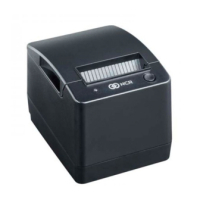7197 Series II Owner’s Guide Chapter 6: Commands
August 2011
80
Name: Name of Command
ASCII:
The ASCII representation of the command control code
followed by its operands.
Hexadecimal:
The hexadecimal representation of the command control code
followed by its operands.
Decimal:
The decimal representation of the command control code
followed by its operands.
Operand n:
A description of the command operand. Other command
operands may be m, p1, p2, x, or y.
Range of n:
The upper and lower limits or list of possible values of the
command operand. The values are listed as decimal values
unless specified otherwise.
Default of n:
The command operand default value after printer reset or
startup.
Description:
A brief description of the use of the command.
Formulas:
Any formulas used for this command.
Example:
Coding example of how to send the command in Visual Basic.
This code assumes we are doing output to an opened and
ready device called "MSCOMM1." The examples use the
hexadecimal command code formats; the ASCII or decimal
formats could also be used in VB. In commands that use an
operand, a specific value is used, and the result of using the
selected value for the operand is described.
Exceptions:
Describes any exceptions to this command, e.g., incompatible
commands.
Related
Information:
Describes related information for this command, e.g., bit
information.
Printer Function Commands
The printer function commands control the following basic printer functions and are
described in order of their hexadecimal codes:
1. Resetting the printer
2. Cutting the paper
3. Opening the cash drawers

